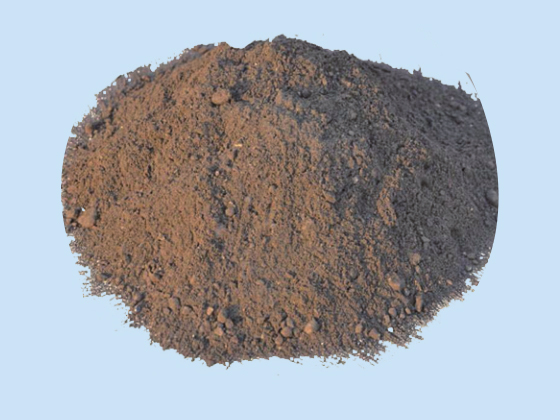Liaoning Haicheng Xinyue Refractories Co., Ltd.
Mobile phone: +86-15041737767 +86-13322303666
Website:
Mailbox: [email protected]
Address: East Pai Lou Industrial Park, Pai Lou Town, Haicheng, Liaoning.
There are many factors affecting the high temperature creep of refractories, and many factors are interrelated. The main factors affecting creep deformation of refractories are as follows:
The following factors will be reviewed in detail:
1. Temperature, load and time
If the refractory material has been set, temperature, load and time are the main factors affecting creep. The lower the temperature, the smaller the load, and the longer the time to reach the uniform creep rate. Conversely, if the high temperature and high load, the shape of the creep curve will immediately change from the first creep, i.e. deceleration creep to the third creep, i.e. acceleration creep. Generally speaking, the greater the stress of a load or material, the higher the temperature, the greater the deformation.
2. Atmosphere
Due to different atmospheres, refractories will have great influence on their creep during testing or using. For example, silicon bricks in oxidizing atmosphere, even if the liquid phase is contained, still remain rigid under load, and in reducing atmosphere, the temperature of creep is much lower than that in oxidizing atmosphere. In fact, all kinds of refractories containing SiO2 have this phenomenon, which is mainly due to the reduction of SiO2 in reducing atmosphere and the existence of Fe2O3, TiO2 in the form of low-valent oxides. As a result, the liquid mass increases and the viscosity decreases. Others, such as mullite decomposition temperature in reducing atmosphere, greatly affect the creep of high alumina refractories.
3. Chemical composition
It can be said that the chemical composition of refractories will determine the various properties of refractories, for creep properties, because the creep properties of refractories depend on continuous phase-mdash; glass phase, and glass phase is mainly low melt, so special attention should be paid to the control of the same impurity content. When Zhong Xiangchong studied the effect of some oxides on the phase composition, microstructure and thermomechanical properties of sintered bauxite, he found that with the increase of glass phase by 0.7%, mullite decreased by 1.5%~2%, and the impurity content of glass phase increased, so the viscosity of glass phase decreased and the creep resistance of the material decreased. The increase of SiO2 content in the glass phase increases and the formation of high SiO2 glass viscosity increases. The size and phase composition of high alumina bricks can be clearly seen at different temperatures.
In short, because the chemical composition determines the mineral composition of the material, and various mineral composition of the structure of the material thus shows its unique performance. Therefore, to grasp the chemical composition of low melting point minerals on the whole, especially at K2O and Na2O, because both K2O and Na2O enter the glass phase, while Fe2O3 and TiO2 will dissolve part of the solid solution into the crystalline phase (corundum and mullite), which is less harmful.
4. Mineral composition

It is well known that the elastic modulus, as well as the melting point and the coefficient of thermal expansion, also reflects the bonding force between atoms and the structural energy of materials. It can indicate the ability of materials to resist creep deformation macroscopically. It is easy to deform. This is why people choose corundum mullite products as high temperature creep resistant materials.
From the creep mechanism, we have known that creep is often carried out in the form of grain boundary slip, so single crystal materials, grain boundaries less, good creep resistance, on the contrary, polycrystalline materials, grain boundaries increase in the number of slip lines, materials are prone to deformation.
5. Microstructure
(1) The creep of crystalline refractories is mainly determined by their microstructure. The microstructure of crystals depends not only on the properties of crystals, such as melting point, elastic modulus and so on, but also on their size, shape and bonding state, i.e. the interfacial structural factors of crystals. The creep rate of mullite is almost independent of the composition and quantity of the clinker particles, mainly related to the heterogeneity of its chemical and mineral structure, but the contact conditions between the particles have a greater impact, because it basically determines the properties of the material, generally speaking, crossing into a network structure, well-bonded framework structure between the crystals, resistance. The creep properties of the corundum-mullite system are excellent. Zhong Xiangchong has studied the high temperature properties of the corundum-mullite system and proposed that the best ratio of the two crystalline phases is 75:25 or 25:75, which is better than that of a single material. This is because the grains interweave and fill each other in this ratio, forming a solid network. From the point of view of grain boundary slip, grain refinement will help grain slip and make the material have plastic behavior. This is a main measure taken by superconducting materials. But for creep resistance, it is precisely to avoid such plastic deformation. Therefore, in selecting materials, we should choose materials with large grain size and good crystallization.
(2) The glass phase is very important to the creep behavior of refractories, because it is a continuous liquid phase in the refractories at high temperature, so its composition and property distribution affect the creep behavior in varying degrees. It is reported that the deformation rate increases sharply even if the interlayer is small when glass inclusions are formed at the crystalline interface. On the other hand, a continuous rigid skeleton, even with a large number of low strength inclusions, can significantly resist creep. That is to say, the liquid phase preferably exists in the intergranular corner and does not infiltrate the crystal. In the firing and creep tests of products, the interaction between liquid phase and crystal phase not only changes its quantity and composition, but also changes its phase boundary state and interfacial energy, affecting the creep activation energy. Speed increases. When the strain reaches a certain level, the liquid phase is squeezed to the intergranular corner under the action of compressive stress. When MgO in liquid phase is supersaturated and intergranular periclase is precipitated, the intergranular bonding state can be improved and the creep rate can be slowed down.
In conclusion, the material with high liquid viscosity and good adhesion with particles has excellent creep resistance. The viscosity of liquid phase is particularly important here. The quantity, distribution and nature of liquid phase determine the creep resistance of refractories. According to the literature, the creep properties of high alumina refractories are secondary high alumina brick & ge; primary high alumina brick & ge; tertiary high alumina brick and so on. The reason is that the microstructure of the third-grade high-alumina brick material is mainly manifested by the burial of small mullite crystals in continuous glass matrix, and the poor creep resistance of the first-grade high-alumina brick material is due to the low liquid viscosity. At high temperatures, the boundary of dissolved particles decreases the contact between crystals, while the secondary high-alumina brick materials have close crystal-to-crystal contact and form a continuous interlaced network structure, and the glass phase is distributed in the network gap.
(3) Most of the pores in porous refractories exist in the form of cracks, so their shape, size and distribution can affect creep. However, according to the literature, the effect of pore size and pore size on the creep deformation rate of dense sintered materials is small, mainly the effect of porosity. The porosity is high, and the effective section reduces the stress concentration. Moreover, the surface of the blowhole is highly concentrated, which may cause grain boundary slip and diffusion, and reduce the creep resistance.
6. The influence of some technological factors on creep properties.
The microstructure of refractories is determined by the production process, which is closely related to each link of the production process. The size and distribution of porosity, the bond strength between binder and clinker particles, the development of crystal, contact and condition are all formed in the production process.
(1) When the amount of bound phase increased from 15% to 45%, the density of material increased and the number of atmospheric pores decreased. When the content of bonding phase is 5%, the aggregate particles are in direct contact, because the amount of bonding agent is insufficient to fill the voids, contact area is small, resulting in greater local stress, creep increases. When the content of binder is equal, the aggregate separates from each other, and when sintered, a small number of pores are formed, the contact area increases, and the creep shape decreases. The material containing 30% binder is in the middle.
The change of critical granularity of aggregate particles has no significant effect on creep property. Reasonable grain gradation leads to compact accumulation, which decreases porosity and creep property of the samples.
(2) Forming pressure from Lu Meiya's research on corundum refractories shows that the total contact surface area of particles is not fully expanded when the pressure is small, so the slip state of particles is reduced during deformation. When the molding pressure increases, the density of the material increases, the porosity decreases, and the creep rate of the uniform creep stage decreases.
(3) As mentioned above, the atmosphere also has a great influence on creep, so the firing atmosphere should be selected according to different materials suitable atmosphere, the Al2O3-SiO2 system materials should be selected in oxidizing atmosphere. The structure of the materials depends on the structure after high temperature firing. Therefore, suitable temperature, pressure, holding time and sintering atmosphere should be adopted to make the material sintered sufficiently, and the contact between crystals is good, so as to reduce the creep rate.
However, if the production process can ensure that the clinker particles are fully cemented in the bonding phase during the molding and sintering process, the material production process has little effect on creep. However, if the clinker particles are not fully cemented, the deformation rate of the material increases and reaches a larger value. If the process flow is not selected in the best way, the effect of the process on creep is quite strong.
